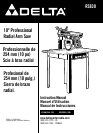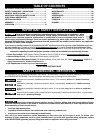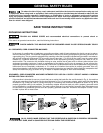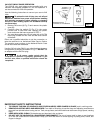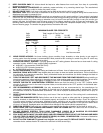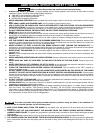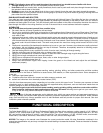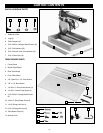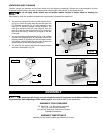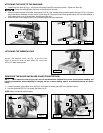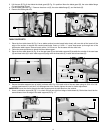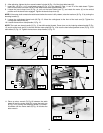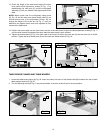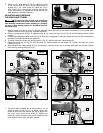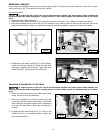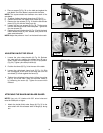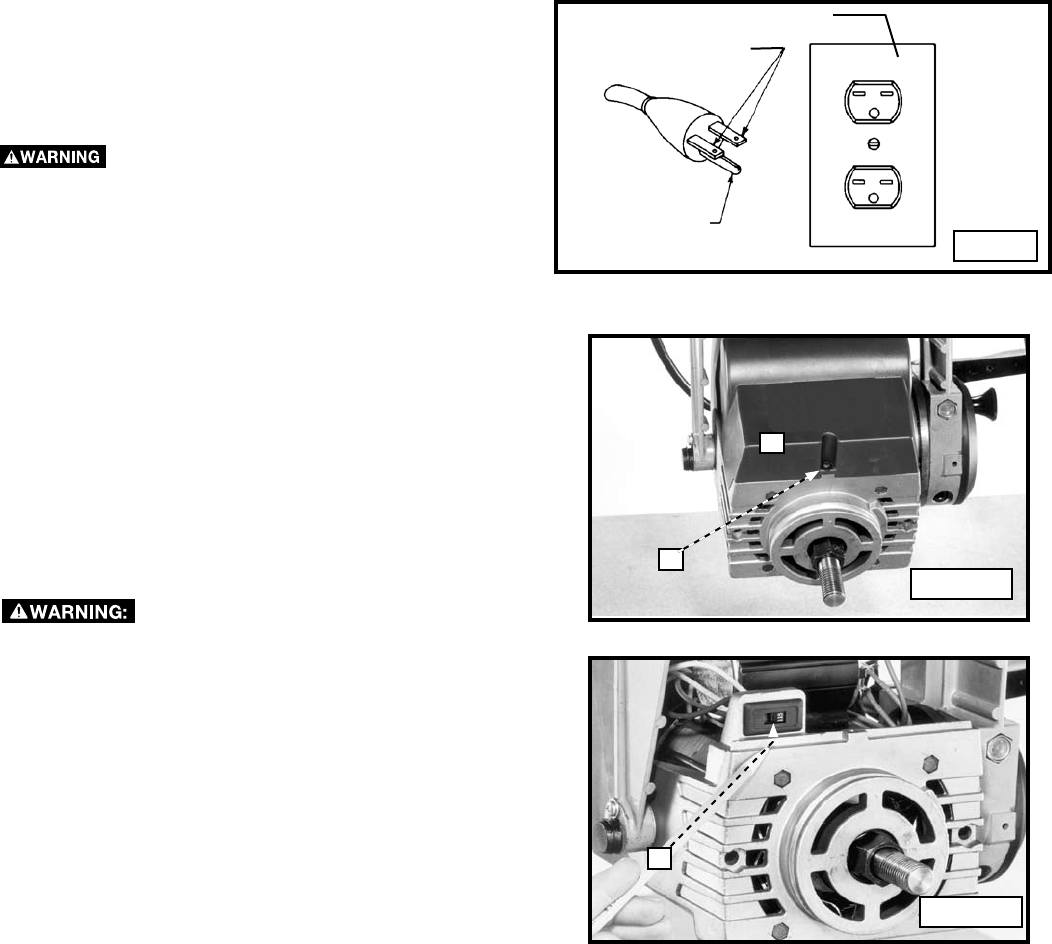
4
1. TO REDUCE THE RISK OF KICKBACK AND OTHER INJURIES, KEEP GUARDS IN PLACE, and in working order.
2. REMOVE ADJUSTING KEYS AND WRENCHES. Form habit of checking to see that keys and adjusting wrenches are
removed from spindle before turning tool on. Tools, scrap pieces, and other debris can be thrown at high speed, causing
injury.
3. KEEP WORK AREA CLEAN. Cluttered areas and benches invite accidents.
4. DO NOT USE THE MACHINE IN A DANGEROUS ENVIRONMENT. The use of power tools in damp or wet locations
or in rain can cause shock or electrocution. Keep your work area well-lit to avoid tripping or placing arms, hands, and
fingers in danger.
IMPORTANT SAFETY INSTRUCTIONS
1. Remove the screw (A) Fig. D and remove the plastic
cover (B).
2. Carefully slide the switch (C) Fig. E in the motor
junction box to read 240 volts. Replace the plastic
cover and screw that were removed in STEP 1.
3. You must also replace the 120 volt plug with a UL/CSA
listed plug suitable for 240 volts and the rated current
of the saw.
Either use a qualified electrician to do the conversion, or
take the machine to an Authorized Delta Service Center.
The machine must conform to the National Electric Code
and all local codes and ordinances.
Use the 240 volt plug ONLY in an outlet that has the same
configuration as the plug illustrated in Fig. C. DO NOT use
an adapter with the 240 volt plug.
To reduce the risk of injury, turn unit off and
disconnect machine from power source before installing
and removing accessories, before adjusting or changing
set-ups or when making repairs. An accidental start-up
can cause injury.
Fig. D
Fig. E
A
B
C
240 VOLT SINGLE PHASE OPERATION
The 120/240 volt, dual-voltage motor supplied with your
machine was shipped prepared for 120 volt operation. It
can be converted for 240 volt operation.
Use the following instructions to convert your saw to 240
volts.
In all cases, make certain that the
receptacle in question is properly grounded. If you
are not sure, have a qualified electrician check the
receptacle.
GROUNDED OUTLET BOX
CURRENT
CARRYING
PRONGS
GROUNDING BLADE
IS LONGEST OF THE 3 BLADES.
Fig. C



